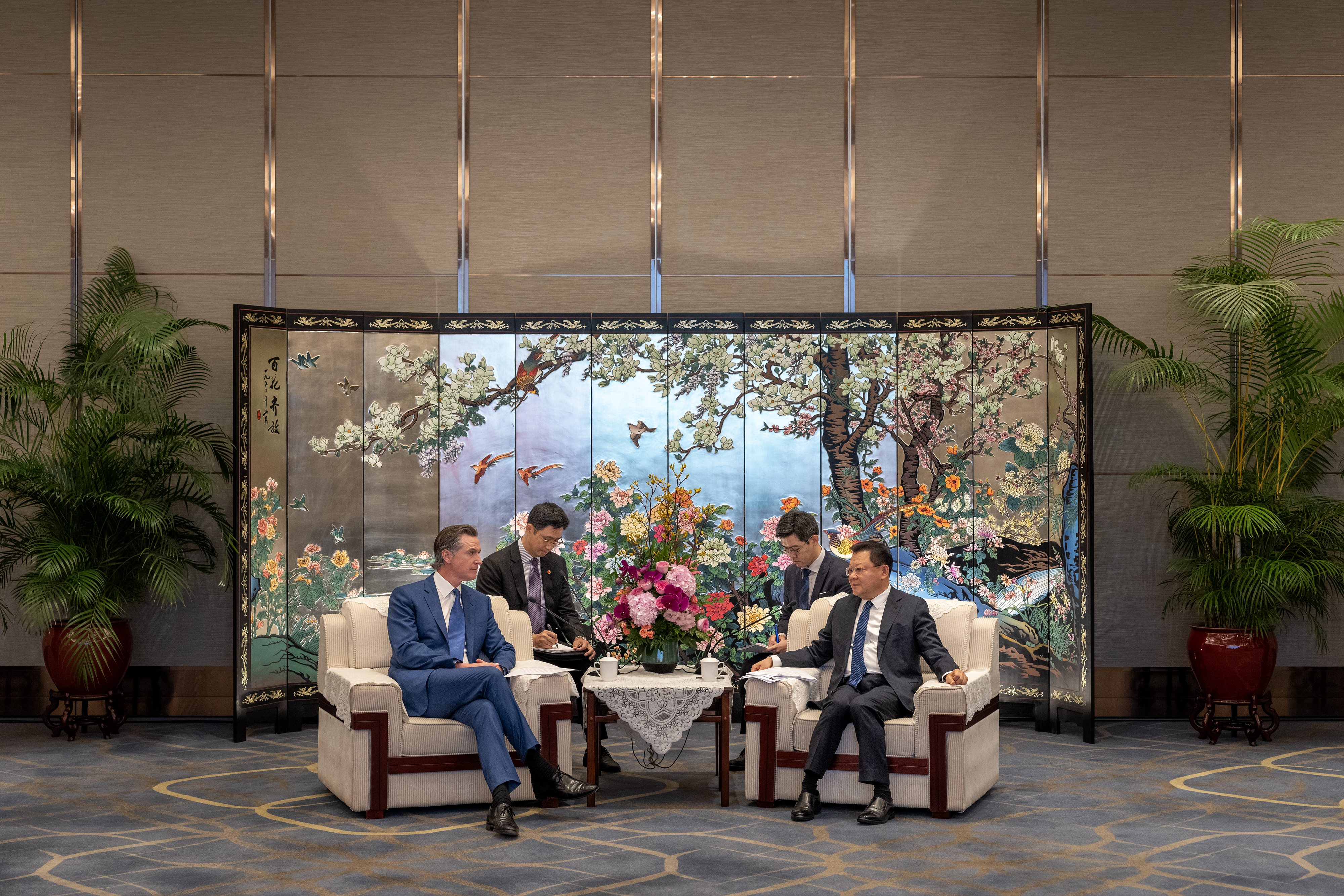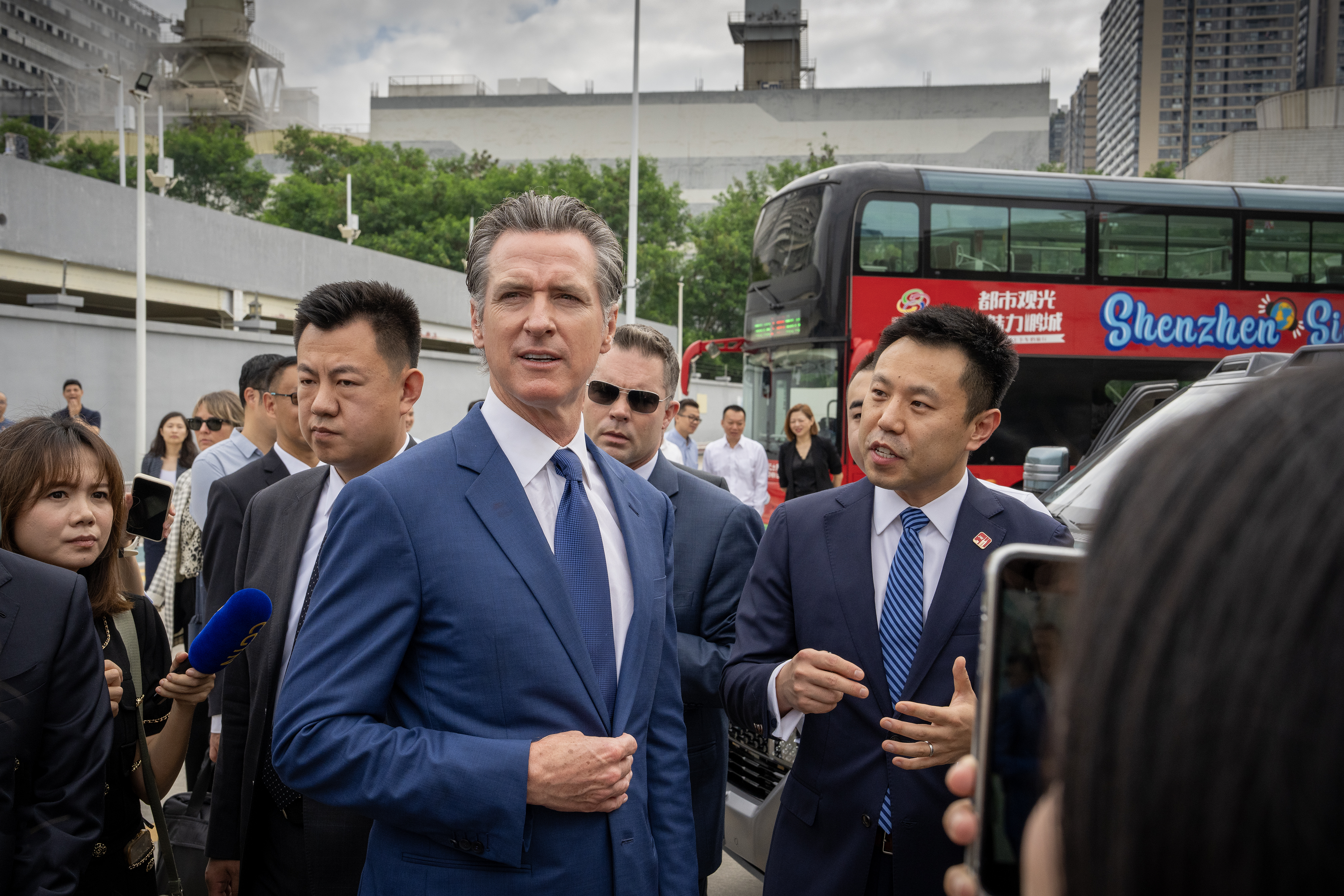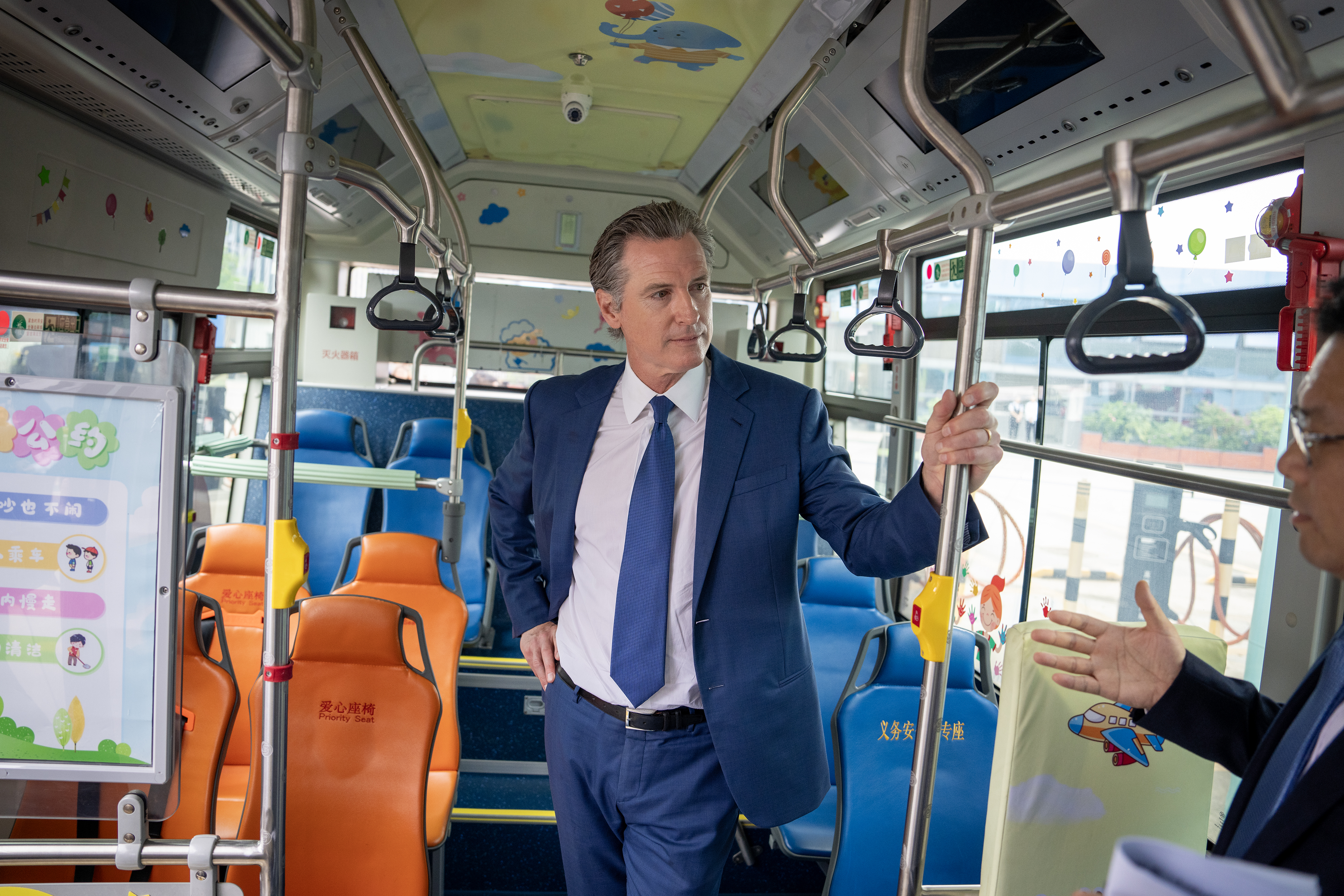WHAT YOU NEED TO KNOW: Governor Newsom’s weeklong trip to China continued Tuesday with a tour of the world’s first zero-emission municipal bus fleet and a new climate partnership with the Province of Guangdong.
GUANGZHOU – Governor Gavin Newsom spent Tuesday in a region known as China’s Greater Bay Area – a megalopolis of millions of people consisting of Hong Kong, Macao and nine major cities – where he visited the world’s first zero-emission city bus fleet and California signed a new climate partnership with the Guangdong Province.
Joined by government officials and business leaders, Governor Newsom began his day in Shenzhen – a city of 12.5 million people – and toured an electric bus depot to see the city’s successful electric vehicle transition.
Downloadable high-res photos are available here.


In 2018, following years of collaboration with California via an existing partnership focused on zero emission vehicles (ZEVs), Shenzhen became the first city in the world to transition to an all-electric bus fleet with 16,000 buses as well as 22,000 taxis. The city has built 40,000 charging stations and has implemented innovative technologies like battery swapping to support a quick transition to ZEVs.
“California has shown the world that making the transition to electric vehicles is not just good for the planet, it’s good for the economy – spurring innovation and competition.
The Greater Bay Area of China — a mega-region with millions of people — proves what can be done by moving from ambition to action: rapidly transitioning to an all-electric bus and taxi fleet with the infrastructure to support it. We’re proud to have a partner like Guangdong in our efforts to make the tailpipe a thing of the past.”
Governor Gavin Newsom
California leads the nation in electric vehicle adoption and is set to phase out the sale of new gas powered vehicles by 2035. Earlier this year, California became the first jurisdiction in the world to set a date to end the sales of traditional combustion trucks, creating a path to 100% zero emission medium- and heavy-duty trucks on the roads in California by 2045. Yesterday, the Governor announced that California surpassed its ZEV truck sales goal two years ahead of schedule.

The Governor then traveled to Guangdong’s Capital City of Guangzhou. Governor Newsom met with Governor Wang Weizhong of Guangdong and discussed years of successful climate collaboration between the two governments. California and Guangdong then signed a new MOU focused on carbon markets, industrial and power sector decarbonization, and climate adaptation. The text of the MOU is here.
This new MOU adds to a 2013 MOU between California’s Environmental Protection Agency and Guangdong under the leadership of Governor Jerry Brown. Since then, Guangdong’s Department of Ecology and Environment and the California Air Resources Board and California Energy Commission have had productive technical exchanges on carbon markets, energy planning and reducing methane in agricultural and waste sectors.
California’s cap and trade program has been a critical tool for reducing greenhouse gas emissions and has funded over $25 billion for the state’s climate programs. The MOU signed today will support Guangdong – the Chinese province with the biggest GDP – as it seeks to replicate California’s efforts to broaden the scope of its cap-and-trade market.
As part of efforts to decarbonize, Guangdong is currently building 200 hydrogen refueling stations to support a goal of 10,000 hydrogen vehicles on the road by 2025. California was recently selected as a national hydrogen hub and is set to receive up to $1.2 billion from the U.S. Department of Energy to accelerate the development and deployment of clean renewable hydrogen, critical to cutting pollution and expanding the clean energy economy statewide.

